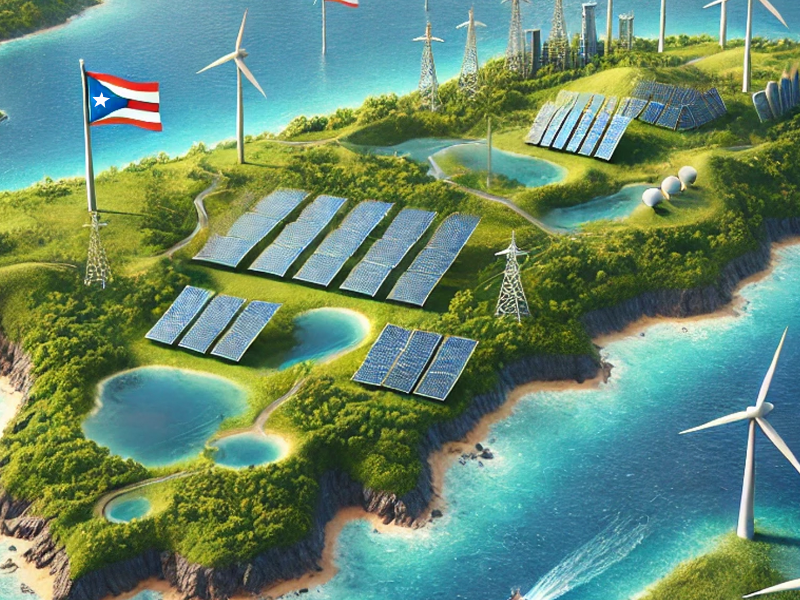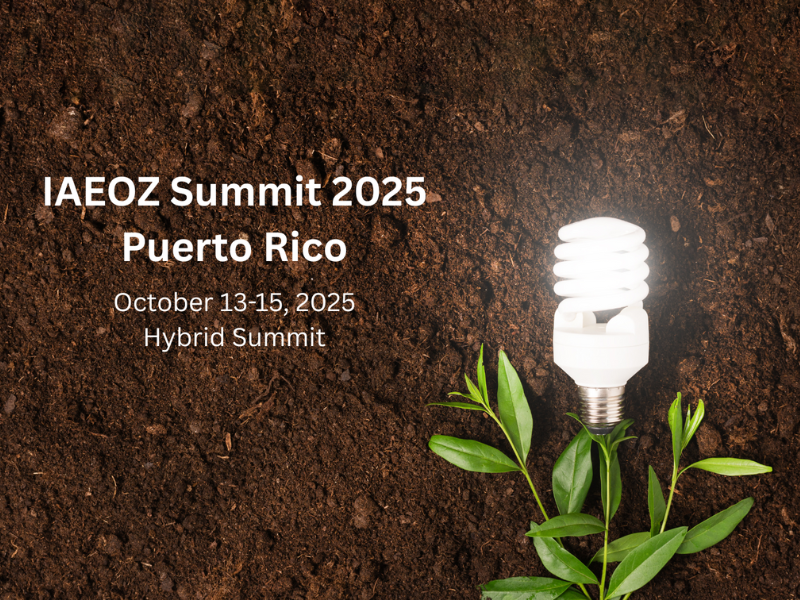Powering Puerto Rico: What Works for Alternative Energy to Keep the Lights On in 2025
Introduction: A Path to Energy Independence
Puerto Rico’s energy challenges have long been a topic of concern. From devastating hurricanes to an aging electrical grid, the island has faced consistent power outages and energy insecurity. These issues have not only impacted daily life but have also slowed economic progress. With the goal of achieving 40% renewable energy by 2025, the island is at a pivotal moment in its energy transition. This shift presents immense opportunities for alternative energy solutions to ensure Puerto Ricans enjoy uninterrupted power, foster economic growth, and create a resilient energy system. As we look ahead, what works for Puerto Rico’s energy future? Let’s explore the most promising strategies.
The Current State of Energy in Puerto Rico
Puerto Rico’s energy system remains heavily reliant on imported fossil fuels, with over 94% of its electricity generated from non-renewable sources. This dependence has led to high energy costs and vulnerability to supply chain disruptions. Despite substantial Federal disaster recovery funds post-Hurricane Maria, the electrical grid still suffers from frequent outages and inefficiencies.
To combat these challenges, Puerto Rico enacted the Energy Public Policy Act (Act 17), which mandates the adoption of renewable energy sources. The Act outlines ambitious targets: 40% renewable energy by 2025, 60% by 2040, and 100% by 2050. While progress has been slow, the stage is set for alternative energy to play a transformative role in Puerto Rico.
Key Alternative Energy Solutions for Puerto Rico
1. Solar Energy: Harnessing Puerto Rico’s Sunshine
Puerto Rico’s location provides ample solar irradiance, making it an ideal candidate for solar energy projects. Solar panels can be installed on rooftops, reducing reliance on centralized power plants and minimizing transmission losses. Community solar initiatives, such as those implemented by Casa Pueblo, have already demonstrated the potential for locally owned, renewable energy systems.
Larger-scale solar farms, like the Marahu Solar Project, are poised to make a significant impact. This project is expected to generate 460,000 MWh annually, powering approximately 43,000 homes. The scalability, affordability, and reliability of solar energy make it a cornerstone of Puerto Rico’s renewable energy strategy.
2. Wind Energy: Tapping into Coastal Potential
While less developed than solar, wind energy also holds promise for Puerto Rico. The island's coastline and offshore areas offer significant wind energy potential. Advances in wind turbine technology have made it possible to generate electricity in regions with moderate wind speeds, making this an increasingly viable option.
Efforts to develop offshore wind projects, coupled with Federal support, could provide a steady and sustainable energy source for Puerto Rico. However, challenges such as permitting, environmental concerns, and logistical issues need to be addressed to unlock this potential fully.
3. Hydroelectric and Ocean Energy: Leveraging Water Resources
Hydropower has historically been a part of Puerto Rico’s energy mix, but many of the island’s hydroelectric facilities are outdated. Modernizing these systems and exploring small-scale hydroelectric projects can contribute to renewable energy goals. Additionally, innovative ocean energy technologies, such as wave and tidal energy, are being researched for their feasibility in Puerto Rico.
The Cooperativa Hidroeléctrica de la Montaña serves as a model for how community-driven efforts can use hydroelectric resources to provide affordable and reliable power.
4. Biomass and Waste-to-Energy Solutions
Puerto Rico generates a significant amount of agricultural and municipal waste, which can be converted into energy through biomass and waste-to-energy technologies. These solutions address two challenges simultaneously: waste management and energy generation. Investing in biomass facilities can help diversify the energy portfolio while reducing landfill waste. However, careful planning is necessary to ensure these technologies align with environmental sustainability goals.
Empowering Communities Through Renewable Energy
Microgrids: Local Solutions for Resilience
Microgrids have emerged as a game-changer for Puerto Rico’s energy landscape. These localized systems can operate independently of the central grid, providing power to communities during outages. After Hurricane Maria, several microgrid projects were implemented, showcasing their ability to improve energy resilience. Community solar projects are a key example of microgrids in action. These initiatives empower local communities to own and manage their energy resources, reducing dependency on utility companies and promoting energy equity.
Public-Private Partnerships (PPPs): Driving Investment
Public-private partnerships have played a crucial role in advancing renewable energy projects in Puerto Rico. By leveraging private sector expertise and Federal funding, PPPs have facilitated the development of solar farms, wind projects, and microgrids.
The MBDA Federal Procurement Center is instrumental in connecting minority business enterprises with Federal contracts and investment opportunities. "These partnerships not only accelerate the adoption of renewable energy, but also support economic development across the island as the MBDA Federal Procurement Center and the Puerto Rico MBDA Center have a shared commitment to ensure that community benefits and reliable alternative energy sources are available to keep the lights on in Puerto Rico," says Keith Moore, MBDA Federal Procurement Center Operator.
Overcoming Barriers to Implementation
Infrastructure Challenges
Puerto Rico’s aging infrastructure poses a significant hurdle for renewable energy projects. Many areas require extensive upgrades to support new technologies. Transporting and installing renewable energy systems in remote regions adds another layer of complexity.
Regulatory and Policy Hurdles
While Act 17 provides a strong framework for renewable energy, bureaucratic delays and permitting challenges often slow progress. Streamlining these processes is essential to accelerate the deployment of alternative energy solutions.
Financing and Investment Constraints
The upfront costs of renewable energy projects can be prohibitive, especially for small businesses and low-income communities. Innovative financing mechanisms, such as green bonds and energy-as-a-service models, can help overcome these barriers.
The Role of Federal and Local Support
MBDA Federal Procurement Center: Empowering Businesses
The MBDA Federal Procurement Center plays a critical role in facilitating Puerto Rico’s energy transition. By connecting minority business enterprises with Federal procurement officials, the center helps these businesses secure contracts and participate in renewable energy projects. This support is vital for fostering a diverse and inclusive renewable energy ecosystem.
Federal Disaster Recovery Funds
Puerto Rico has received substantial Federal funding to rebuild its energy infrastructure following natural disasters, particularly after Hurricanes Maria and Fiona. Key funding sources include billions allocated through the Federal Emergency Management Agency (FEMA), the U.S. Department of Housing and Urban Development’s (HUD) Community Development Block Grant – Disaster Recovery (CDBG-DR) program, and the U.S. Department of Energy’s initiatives for grid modernization and energy resilience.
For example:
- FEMA has committed more than $28 billion for Puerto Rico's recovery efforts, with a significant portion directed at improving energy infrastructure.
- HUD’s CDBG-DR program allocated approximately $20 billion, of which funds are available for innovative energy solutions and resilient infrastructure projects.
- The U.S. Department of Energy has prioritized grid modernization and allocated funding for renewable energy adoption and microgrid projects on the island.
This influx of Federal resources provides unprecedented opportunities to develop alternative energy systems, such as solar farms, wind projects, and microgrids, which will enhance Puerto Rico’s resilience and sustainability.
However, navigating the complexities of these funding streams can be challenging for small and minority business enterprises. This is where the MBDA Federal Procurement Center provides critical support. The center connects Puerto Rican businesses to procurement opportunities by offering training, technical assistance, and access to Federal agencies managing disaster relief funds. MBDA helps ensure that local small businesses can successfully bid for contracts, access grants, and contribute to Puerto Rico’s energy transformation.
By assisting businesses in understanding procurement requirements, preparing proposals, and identifying funding opportunities, MBDA empowers Puerto Rican entrepreneurs to secure their share of these disaster relief funds, fostering economic growth and energy resilience on the island.
Collaboration with NGOs and Local Leaders
Non-governmental organizations have been key players in promoting renewable energy and community-driven solutions. Collaborating with local leaders ensures that energy projects address the specific needs of Puerto Rican communities.
Looking Ahead: The Vision for 2025
By 2025, Puerto Rico aims to achieve 40% renewable energy generation. While ambitious, this goal is attainable with the right mix of technologies, investments, and policies. A resilient energy system will reduce the frequency and duration of outages, lower energy costs, and create jobs across the island.
Emerging technologies like energy storage and smart grids will also play a pivotal role. Battery systems can store excess solar and wind energy, ensuring a stable power supply even during periods of low generation. Smart grids will enhance the efficiency and reliability of energy distribution.
Economic growth is another critical benefit of the renewable energy transition. From manufacturing solar panels to constructing wind farms, the renewable energy sector offers countless opportunities for job creation and entrepreneurship.
Conclusion
Puerto Rico stands at a crossroads. The transition to renewable energy is not just a necessity but an opportunity to redefine the island’s future. By embracing alternative energy solutions, Puerto Rico can build a resilient, sustainable, and equitable energy system that benefits all its residents. Stakeholders – including Government agencies, private companies, and local communities – must collaborate to overcome challenges and seize the opportunities presented by renewable energy. The MBDA Federal Procurement Center is committed to supporting this transition, empowering businesses to lead the charge toward a brighter future. Let’s work together to keep the lights on in Puerto Rico, ensuring a sustainable and prosperous 2025.
References
Casa Pueblo. (n.d.). Welcome to Casa Pueblo. Retrieved January 7, 2025, from https://casapueblo.org/
Cooperativa Hidroeléctrica de la Montaña. (2023). Puerto Rico hydropower cooperative. Retrieved January 7, 2025, from https://microgridknowledge.com/puerto-rico-hydropower-cooperative/
Energy Policy Act (Act 17). (n.d.). Puerto Rico’s energy transformation. Puerto Rico Energy Bureau. Retrieved January 7, 2025, from https://energia.pr.gov/en/puerto-ricos-energy-transformation
Federal Emergency Management Agency (FEMA). (2023). Disaster response and recovery. U.S. Department of Energy. Retrieved January 7, 2025, from https://www.energy.gov/ceser/disaster-response-and-recovery
MBDA Federal Procurement Center. (n.d.). Federal procurement center. U.S. Department of Commerce. Retrieved January 7, 2025, from https://www.mbda.gov/services/federal-procurement-center
Puerto Rico MBDA Business Center. (n.d.). Puerto Rico MBDA Business Center. Retrieved January 7, 2025, from https://prmbda.com/
U.S. Department of Energy. (n.d.). Offshore wind research and development. Office of Energy Efficiency and Renewable Energy. Retrieved January 7, 2025, from https://www.energy.gov/eere/wind/offshore-wind-research-and-development
U.S. Department of Energy. (n.d.). Smart grid research and modernization. Office of Electricity. Retrieved January 7, 2025, from https://www.energy.gov/oe/activities/technology-development/grid-modernization-and-smart-grid
U.S. Green Bonds Initiative. (n.d.). Green municipal bonds. Retrieved January 7, 2025, from https://www.climatebonds.net/market/green-bond-segments/municipal
BayWa r.e. (2023). Utility-scale solar and energy storage project in Puerto Rico. PR Newswire. Retrieved January 7, 2025, from https://www.prnewswire.com/news-releases/baywa-re-announces-utility-scale-solar-and-energy-storage-project-in-puerto-rico-301424189.html
Federal Emergency Management Agency (FEMA). (2020). Accelerated awards strategy for Puerto Rico. Retrieved January 7, 2025, from https://www.fema.gov/about/reports-and-data/faast
Federal Emergency Management Agency (FEMA). (2023). Funding for Puerto Rico's power grid. Retrieved January 7, 2025, from https://www.fema.gov/print/pdf/node/637147
U.S. Department of Housing and Urban Development (HUD). (2021). HUD accelerates access to disaster relief funds. Retrieved January 7, 2025, from https://archives.hud.gov/news/2021/pr21-066.cfm
U.S. Department of Energy (DOE). (n.d.). Grid modernization and resilience programs. Retrieved January 7, 2025, from https://www.energy.gov/ceser/disaster-response-and-recovery
Minority Business Development Agency (MBDA). (n.d.). Federal procurement center overview. Retrieved January 7, 2025, from https://www.mbda.gov/services/federal-procurement-center








